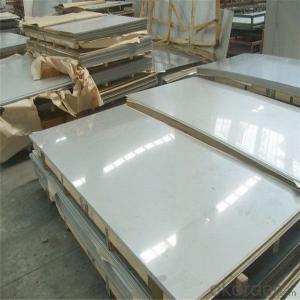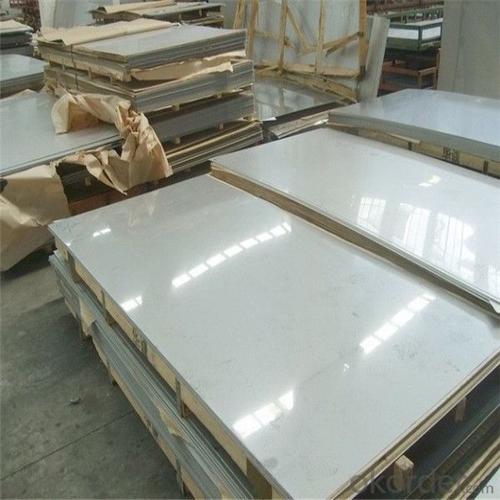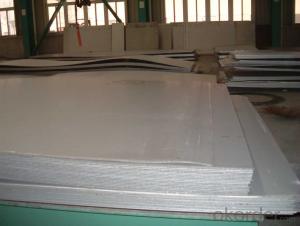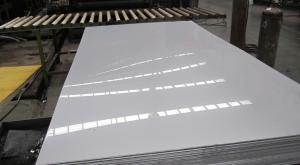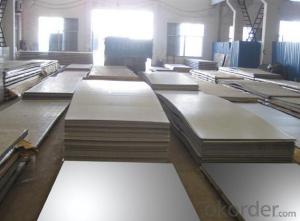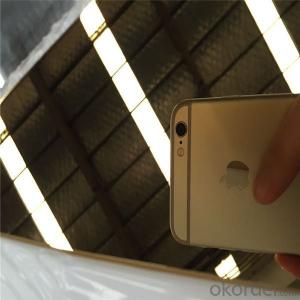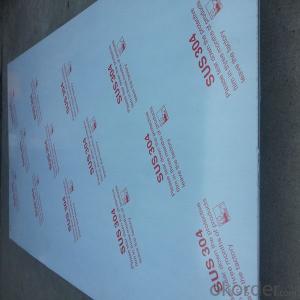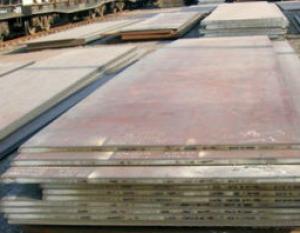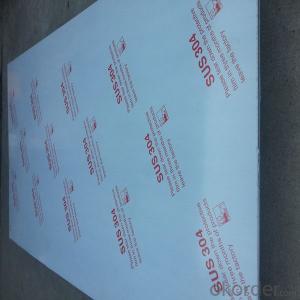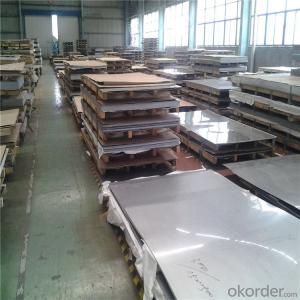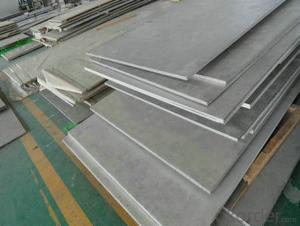Steel Sheet 3316 Stainless Steel Factory Price Half Copper
- Loading Port:
- Shanghai
- Payment Terms:
- TT OR LC
- Min Order Qty:
- 2 m.t.
- Supply Capability:
- 4000 m.t./month
OKorder Service Pledge
OKorder Financial Service
You Might Also Like
Specification
Product Basic Information:
Material | ASTM 3316 | ||
Chemical Composition | Mechanical Properties(In Quenched & Tempered State) | ||
C | 0.1-0.23 | Tensile strength(MPA) | ≥1175 |
Si | 0.17-0.37 | Yield strength (MPA) | ≥1080 |
Mn | 0.30-0.60 | Elongation(δ5/%) | ≥10 |
Cu | ≤0.030 | Reduction in Area (ψ/%) | ≥45 |
Mo | - | Impact (J) | ≥63 |
P | ≤0.035 |
Hardness | ≤269HB
|
S | ≤0.035 | ||
Cr | 1.25-1.65 | ||
Ni | 3.25-3.65 | ||
2.Product Application Areas:
Our products have been used in all kinds of areas, such as aviation,aerospace,navigation,nuclear energy,chemical industry,
electronic information,achine manufacture, petrochemical, automotive,instrument and meter, Communication ,transportation, and medical instruments, etc.
3.Similar steel grade & equivalent steel materials:
USA | Japanese | Gemany | British | France | International | Chinese |
ASTM&AISI&SAE | JIS | EN DIN | EN BS | EN NF | ISO | GB |
3316 | SNC815 | 15NiCr13(1.5752) | - | 20Cr2Ni4 | ||
High strength and resistance to intergranular corrosion and chloride stress corrosion is improved obviously. Stainless steel has great corrosion performance.
Product Sales Information:
Material | ASTM 3316 Alloy Structural Steel |
Size | Thickness:20~50mm Width:200-1000mm Length: 4~6m |
Origin place | Made In China |
Delivery Condition | Hot rolled,cold drawn,forged |
Surface require | Black,grinding,bright,polish |
Heat treatment | Quenched,Tempered,annealed |
Packing | seaworthy packing ,wooden case ,carton,woven bag or at client's requires |
Delivery time | In 10-50 days |
Trade Term | EXW,FOB,CIF |
Payments | T/T or L/C at sight |
Port | China main Port,such as shanghai,Dalian,Shenzhen port. |
MOQ | 1 Ton |
Company Main Products:
Alloy Steel | 5140,5115,5120,5130,5145,4118,4130,4135,6150,5115,4142,4130,4118,6150,4140,4720,4320 ,E9310,8620,4340 |
Tool Steel | H13,1.2344,SKD61,D2,SKD11,1.2379,1.2510,01,SKS3,95MnWCr5,D3,SKD1,1.2419, SKS31,H21,SKD5,1.2581,P20,35CrMo7,1.2738,1.2316,M2 |
Bearing Steel | GCr15,52100,SUJ1,SUJ2,100Cr6,1.2067,55C,8620,4320,9310,440C,M50 |
Spring Steel | 9260,SUP6,SUP7,1.7108,54SiCr6,1.7102,5155,SUP9,1.7176,5160,1.7177,6150, SUP10,51CrV4,1.8159 |
Stainless Steel | 321,sus321,1.4541,304,SUS304,1.4301,410,SUS410,1.4006,420,1.4021,1.4028, 434,1.4113,316L,SUS316L,1.4435,630,1.4542,431,1.4057,201,202,301 |
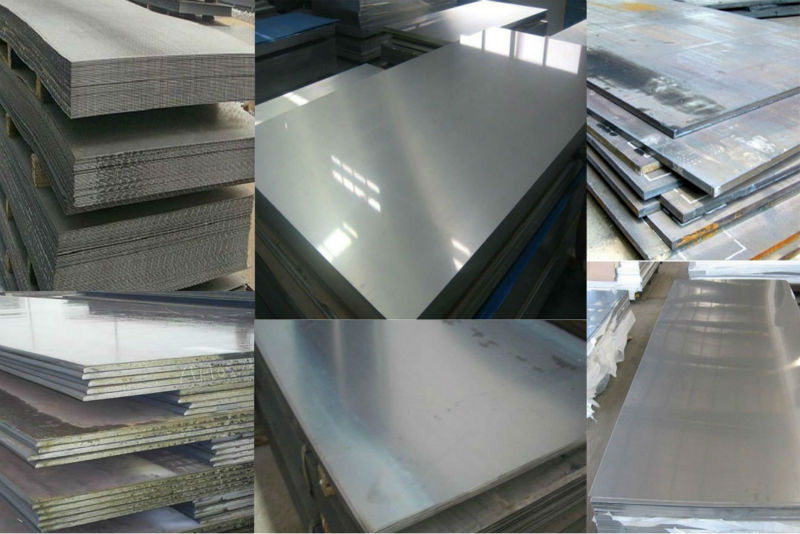

Other Products:
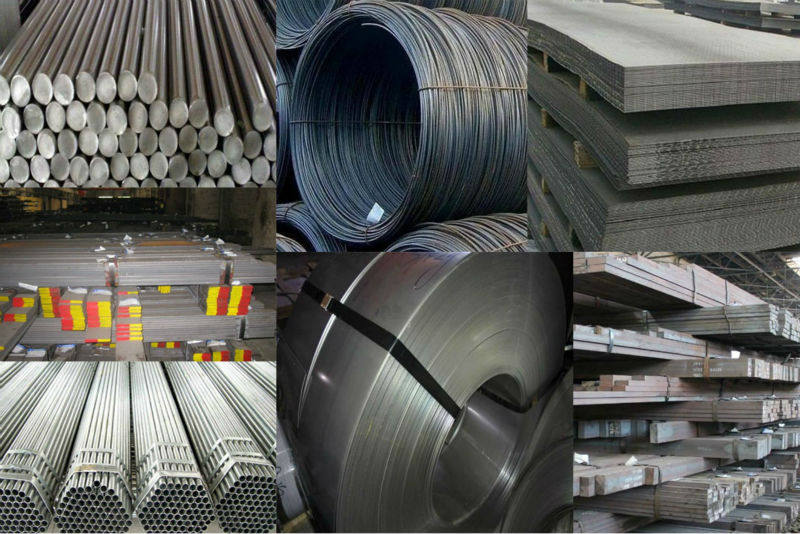
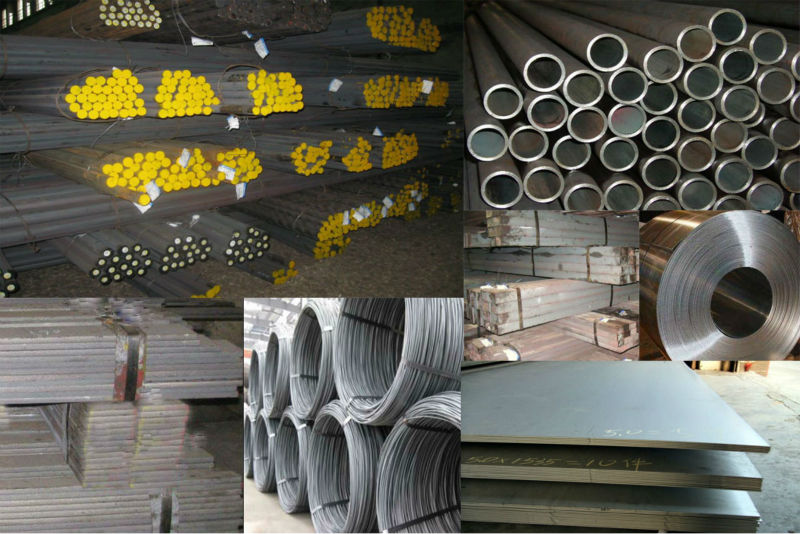
- Q: How do you prevent warping or distortion in stainless steel sheets?
- To prevent warping or distortion in stainless steel sheets, several measures can be taken. First, it is important to properly handle and store the sheets to prevent any bending or twisting during transportation or storage. Secondly, ensuring a smooth and even distribution of heat during welding or fabrication processes can help minimize the chances of warping. Additionally, using proper clamping techniques and supports during machining or cutting operations can help maintain the shape and integrity of the stainless steel sheets. Lastly, adhering to the recommended thicknesses and specifications provided by the manufacturer for specific applications can also help prevent warping or distortion in stainless steel sheets.
- Q: What are the different types of stainless steel sheet coatings available?
- There are several different types of stainless steel sheet coatings available, including electroplated coatings, powder coatings, and organic coatings. Electroplated coatings involve the deposition of a thin layer of metal onto the stainless steel surface, providing enhanced corrosion resistance. Powder coatings involve the application of a dry powder that is then heated and cured to form a protective layer. Organic coatings, such as paints or lacquers, are also commonly used to provide corrosion resistance and improve aesthetic appeal.
- Q: Why do drill holes burn on stainless steel plates? What's the best way to drill them?
- The cutting fluid is made of concentrated emulsions. Commonly used stainless steel drills are: high cobalt bit (M35 bit, M42 bit), in which the M42 bit is the most cost-effective, and carbide drills are also available.
- Q: Can stainless steel sheets be used for architectural mesh?
- Indeed, architectural mesh can be made from stainless steel sheets. Stainless steel is widely favored in the field of architecture for its robustness, ability to withstand corrosion, and attractive appearance. To fabricate architectural mesh, stainless steel sheets can be punctured, woven, or stretched, resulting in intricate patterns commonly employed in architectural endeavors like facades, sunscreens, balustrades, and decorative screens. The adaptability of stainless steel grants a multitude of design options, while its durability guarantees enduring performance. Moreover, stainless steel mesh can be tailored to meet precise architectural specifications in terms of aperture size, wire diameter, and finish.
- Q: Are stainless steel sheets heat-resistant?
- Yes, stainless steel sheets are heat-resistant. Stainless steel is known for its ability to withstand high temperatures without warping or deforming, making it an excellent choice for applications that involve heat exposure. The chromium content in stainless steel forms a protective layer on the surface, which helps to prevent oxidation and corrosion even at elevated temperatures. This heat resistance property makes stainless steel sheets suitable for a wide range of applications, including industrial equipment, kitchen appliances, automotive parts, and construction materials.
- Q: Can stainless steel sheets be used for chemical storage tanks?
- Chemical storage tanks can indeed utilize stainless steel sheets. With its exceptional resistance to corrosion and rust, stainless steel proves to be an ideal material for safely harboring chemicals, including acids, alkalis, and other corrosive substances. The robustness and endurance of stainless steel guarantee that the tanks can withstand both the pressure and weight exerted by the stored chemicals. Moreover, stainless steel remains non-reactive, preventing any chemical interactions and ensuring the purity and integrity of the stored substances. The smooth surface of stainless steel further facilitates effortless cleaning and maintenance, minimizing the risk of contamination. In summary, stainless steel sheets offer a dependable and fitting choice for chemical storage tanks.
- Q: Are stainless steel sheets resistant to crevice corrosion?
- Yes, stainless steel sheets are generally resistant to crevice corrosion due to their high chromium content, which forms a protective oxide layer on the surface and prevents the formation of crevices where corrosion can occur.
- Q: Are stainless steel sheets suitable for chemical tanks?
- Yes, stainless steel sheets are suitable for chemical tanks. Stainless steel is known for its excellent resistance to corrosion, making it an ideal material for storing and transporting chemicals. It has high strength and durability, making it capable of withstanding harsh chemicals and extreme temperatures. Stainless steel also has a smooth, non-porous surface, which prevents the absorption of chemicals and facilitates easy cleaning. Additionally, stainless steel is non-reactive, meaning it does not react with most chemicals, ensuring the integrity of the stored substances. Overall, stainless steel sheets are a reliable and popular choice for chemical tanks due to their resistance to corrosion, strength, durability, and non-reactivity.
- Q: Can stainless steel sheets be used for kitchen countertops?
- Yes, stainless steel sheets can be used for kitchen countertops. Stainless steel is a popular choice for kitchen countertops due to its durability, heat resistance, and hygienic properties. It is resistant to stains, corrosion, and rust, making it a suitable material for a high-traffic area like the kitchen. Stainless steel countertops are also easy to clean and maintain, making them a practical option for busy kitchens. Additionally, stainless steel adds a sleek and modern look to the kitchen, making it a popular choice for contemporary and industrial-style kitchens.
- Q: Can stainless steel sheets be used for stadium seating?
- Certainly! Stadium seating can indeed utilize stainless steel sheets. This particular material boasts durability and resistance against corrosion, rendering it a fitting choice for outdoor purposes such as stadium seating. It can endure various weather conditions, be it rain, snow, or harmful UV rays, without succumbing to deterioration or rust. By manipulating stainless steel sheets, one can fashion them into diverse seating structures, thus presenting a robust and enduring seating solution for stadiums. Furthermore, stainless steel possesses an appealing aesthetic and can be finished in numerous manners to elevate its visual allure, thereby contributing to the stadium's overall design.
Send your message to us
Steel Sheet 3316 Stainless Steel Factory Price Half Copper
- Loading Port:
- Shanghai
- Payment Terms:
- TT OR LC
- Min Order Qty:
- 2 m.t.
- Supply Capability:
- 4000 m.t./month
OKorder Service Pledge
OKorder Financial Service
Similar products
Hot products
Hot Searches
Related keywords
